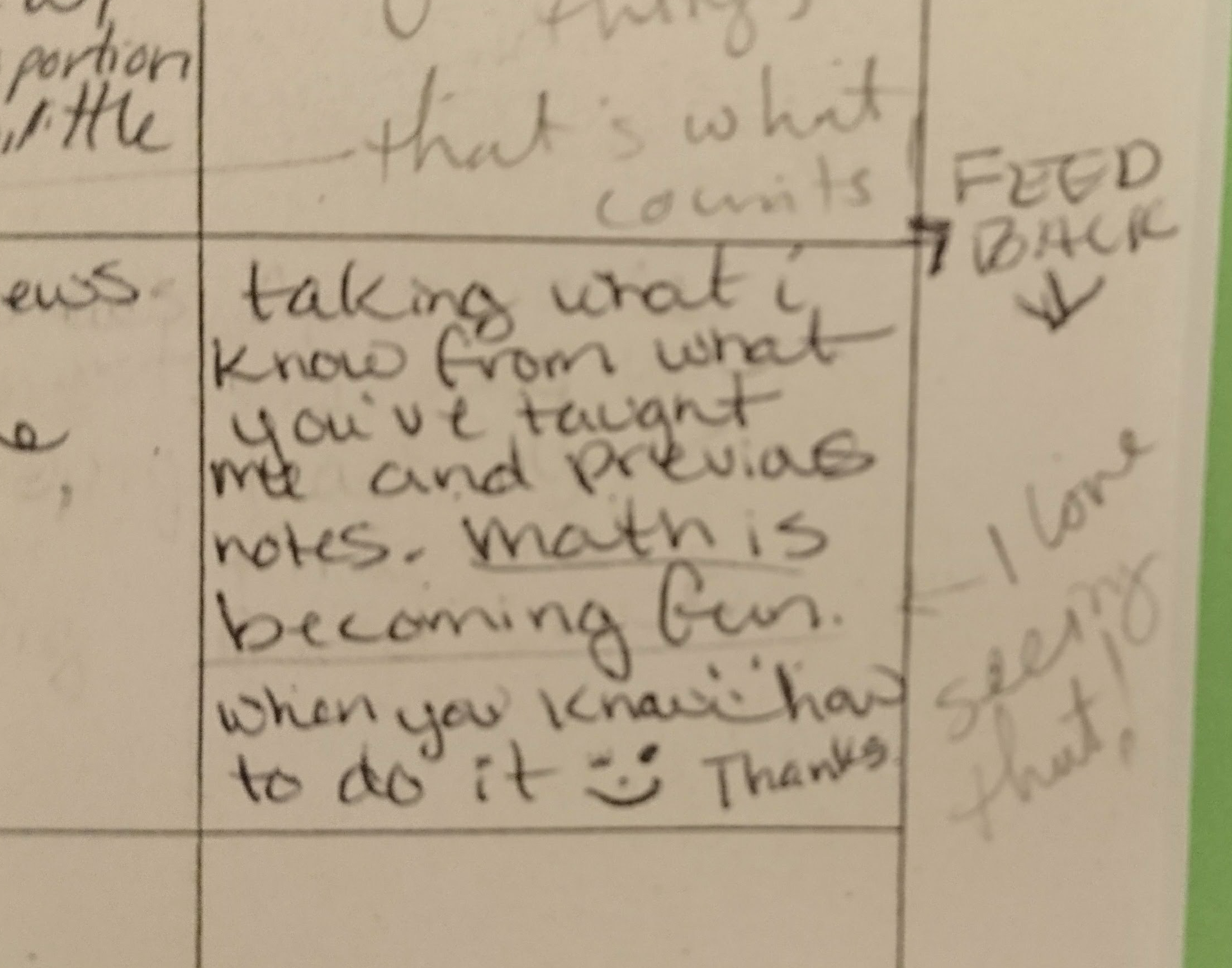So, that happened.
If, we define ‘that’ to mean life, a slight case of overwhelm, and an unplanned 5 month break.
But, it’s summer. I’ve been to the ocean, I’m off from teaching, and I now have the bandwidth to come back to this.
And, with my newly cleared head, I’m thinking about one of my favorite lessons.
Lesson Sketch: Learning Strategies
Why:
I preach and plead for my adult students to study outside of class (see , por ejemplo: homework, more homework and planning for homework)
But — I know the research: most students don’t use particularly efficient strategies to study. I think this doubly applies to my adults who didn’t have great success in the school the first time. And, they have even less time to waste on inefficient studying, this time around.
So, I’ve added preaching and pleading to study effectively.
Also, this is one of a set of first class of the term exercises I use to ease people into doing math and being a student again. (Other examples: Stuck Strategies, Retrieval Practice)
What: Introducing research-backed strategies for effective learning + simple data and analysis.
The Learning Scientists have summarized lots of cognitive research to highlight 6 strategies. I rarely have enough students or time that it makes sense to do all 6, but they’re there if you do. For my class, I generally prioritize: Spaced Practice, Interleaving, Retrieval Practice and Elaboration.
How:
I introduce the topic. I might talk about how scientists do experiments to see what works (I might add that if I had known you could do experiments about learning, not just chemistry or physics, I might have liked science better in high school) I might talk about making the best use of our time, or about shaking things up/experimenting with new techniques, I might remind them how frustrating it is to forget what they’ve learned.
Then, I split the class into groups, and assign each group a strategy. One time I gave out these posters, more recently it’s been the bookmarks, because less is more. If tech wasn’t a headache, I’d try the videos. The group is in charge of working together until everyone understands the strategy. (This can take some coaching) Then we jigsaw, and they teach it to their peers. (More coaching)
Once everyone understands the strategies, we take a poll:
Do you already do this?
Will you try it this term?
Then I have students analyze the data for the strategy they started with. Depending on the class and the time of year, they might find the percent, ratio and/or fraction of the class who gave each answer. If I have more time, we might make graphs of the results. In a way less time pressured world, we might make a bulletin board display with the strategies and our data and study tips for other students at school.
Results:
Spaced practice is a hit. (at least in theory) Whether it happens or not, in the day to day of busy lives, they get this idea. In the great division between tortoises and hares, many of my students are tortoises. Slow and steady sounds good.
Interleaving, on the other hand, is a hard sell. It just sounds so much harder and more confusing, and math is hard and confusing enough, thankyouverymuch. (Although I make them do interleaved practice every week and they tell me it helps, so maybe someday…)
Next Steps:
Truth… this is the first class of the term and by the second we’re off and running, and it’s hard to get back to this. But, yeah, one-off’s are not all that helpful.
So, I’m currently pondering ways to fit a follow up in. I’d love to collect a post- round of data later in the term to see if anyone is actually rying them out.
Free Resource: I fancied up my tally sheets a bit (ahem, data collection tools) and I’m making them available for free in my TPT Store


